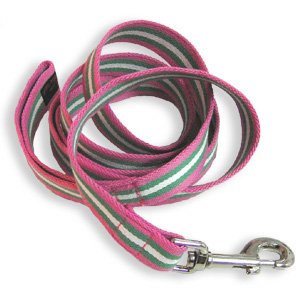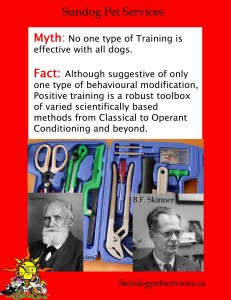How Calculus is Taught
Ca lculus is taught, at the earliest, in high school (in Canada). How is calculus taught? In kindergarten (or preschool) we learn numbers, and perhaps to add and subtract (1+1 = ?). By Grade 6 or 7 we’ve learned more complex math; division, multiplication, some algebra, geometry and maybe basic trigonometry (SOH-CAH-TOA anyone?). By Grade 10 or 11, we’ve learned algebra, probably Trig (y=x^2 + 4x + 4; y = sinx). Calculus in Grade 12. Understanding algebra and trig is essential to learning calculus. Hence the slow progression of learning (12 years!!!).
lculus is taught, at the earliest, in high school (in Canada). How is calculus taught? In kindergarten (or preschool) we learn numbers, and perhaps to add and subtract (1+1 = ?). By Grade 6 or 7 we’ve learned more complex math; division, multiplication, some algebra, geometry and maybe basic trigonometry (SOH-CAH-TOA anyone?). By Grade 10 or 11, we’ve learned algebra, probably Trig (y=x^2 + 4x + 4; y = sinx). Calculus in Grade 12. Understanding algebra and trig is essential to learning calculus. Hence the slow progression of learning (12 years!!!).
How Calculus isn’t taught
Once learning numbers and reciting them once, we don’t immediately start adding and subtracting. Once succeeding in adding and subtracting once, we don’t move immediately move to multiplication and division. Once succeeding once in multiplication and division, we don’t proceed to algebra. Once succeeding once with geometry, we don’t proceed to trig. Once succeeding once with algebra and trig, we don’t move right to Calculus.
Put another way. Once learning the basics of a chosen field (say Biology) one doesn’t move right to polymerase chain reactions (replicating DNA in a lab). Understanding basic units of Cells doesn’t immediately mean DNA replication is understood. “But you know about DNA!”
We wouldn’t teach children, or even adults this way. Yet….
What Does This Mean for Dog Training?
Going too fast. I have been guilty of asking for too much too quickly (I’m sure most professional trainers would also agree too). Humans are in a hurry. We want results NOW (even more so in the last century). Dogs have a different schedule and a different mindset –“What do you want me to do?” (Do I have the skills to do that right now?) and/or “*Why* should I do this now? (“Am I getting paid, and/or is what I’m already doing better?”)
“What do you want me to do?”
Teaching what you want away from distractions first is essential. Before complexity, basic behaviour is needed.
“But he knows how to sit!” — could you do your job in the middle of the Superbowl (or The Grey Cup, for people who like real football -3 downs, 110yardsx65 yards and bigger balls – I’m not biased….). Probably not, or at least not well (unless you’re a professional football player or mascot).
Dogs are asked to do this… a LOT. When there are many distractions around, focus becomes difficult. Most dogs who fail likely don’t have the skill set yet to deal with the distractions. Teaching them to work around the distractions is part of building complexity and “proofing”. To work in the real world, dogs need to know how to work around the different aspects of the real world. Understanding what a carburetor is doesn’t mean you can rebuild one. Some dogs though may have appropriate skill sets and may not participate for other reasons.
“Why should I do it?”
Let’s say you could do your job in the middle of the Superbowl; you paid $250 for these seats by the way. Now someone puts your work in front of you. You’re watching the game, why should you do it now? Not much motivation to do it for free. Now they offer you $1000 dollars. Motivated now; still only $750 and you will miss the game? How about $10,000 if $1000 didn’t work?
A hungry teenager isn’t likely going to pay attention in class (want of food > want of Emily Dickinson). An overly full party goer isn’t going to be tempted by a plate of nachos but might enjoy a nap (Sleep > Food). A rampaging, happy tummy toddler isn’t going to care about a sandwich or a nap when the swing set is waiting (Fun > Food or Sleep)!
Dogs require appropriate pay as well, Once proficient around distractions payments may not need to be as valuable, but in order to maintain their desire to do a behaviour they need practice and at least occasional payment.
And this means…?
Training to fluency could look like this sequence:
- Learn Sit in the House
- Learn Sit in the Backyard
- Practice Sit in the Backyard when the squirrels are running around on the fence
- Practice Sit in the Park when no dogs are around
- Practice Sit in the Park around other dogs/people
- Practice Sit in the Park, after play with other dogs
- Practice Sit in the Park, right before playing with other dogs
Sit could easily be replaced with Recall etc.
I’ve been guilty in the past of “assumption of knowledge”. Consider the following sequence:
- Learn Recall in the House/yard
- Ask for a Recall in the park, during dog play
This is very much like asking that 5 year old to solve the area under a curve.
The Paradox
Before we teach our dogs Calculus, they need to learn the steps involved from learning numbers through addition, multiplication, algebra and trig. Training is faster if we follow steps in increments rather the equivalent of going from constructing paper airplanes to designing the Concord.

 Children as a Mirror – The Great Water Fights!
Children as a Mirror – The Great Water Fights!